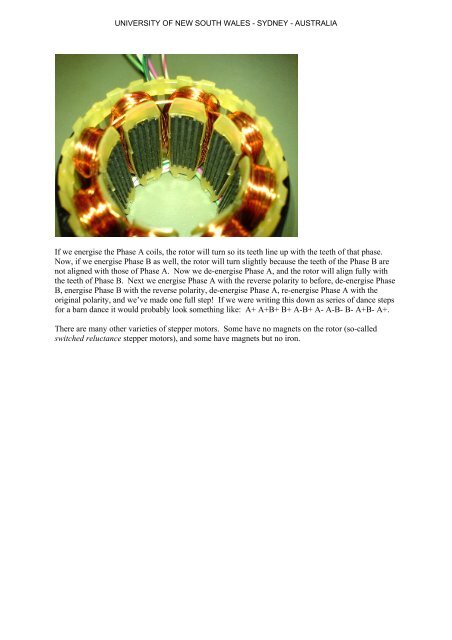How real electric motors work - School of Physics - The University of ...
How real electric motors work - School of Physics - The University of ...
How real electric motors work - School of Physics - The University of ...
You also want an ePaper? Increase the reach of your titles
YUMPU automatically turns print PDFs into web optimized ePapers that Google loves.
UNIVERSITY OF NEW SOUTH WALES - SYDNEY - AUSTRALIA<br />
If we energise the Phase A coils, the rotor will turn so its teeth line up with the teeth <strong>of</strong> that phase.<br />
Now, if we energise Phase B as well, the rotor will turn slightly because the teeth <strong>of</strong> the Phase B are<br />
not aligned with those <strong>of</strong> Phase A. Now we de-energise Phase A, and the rotor will align fully with<br />
the teeth <strong>of</strong> Phase B. Next we energise Phase A with the reverse polarity to before, de-energise Phase<br />
B, energise Phase B with the reverse polarity, de-energise Phase A, re-energise Phase A with the<br />
original polarity, and we’ve made one full step! If we were writing this down as series <strong>of</strong> dance steps<br />
for a barn dance it would probably look something like: A+ A+B+ B+ A-B+ A- A-B- B- A+B- A+.<br />
<strong>The</strong>re are many other varieties <strong>of</strong> stepper <strong>motors</strong>. Some have no magnets on the rotor (so-called<br />
switched reluctance stepper <strong>motors</strong>), and some have magnets but no iron.
















